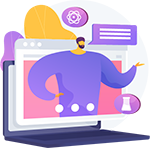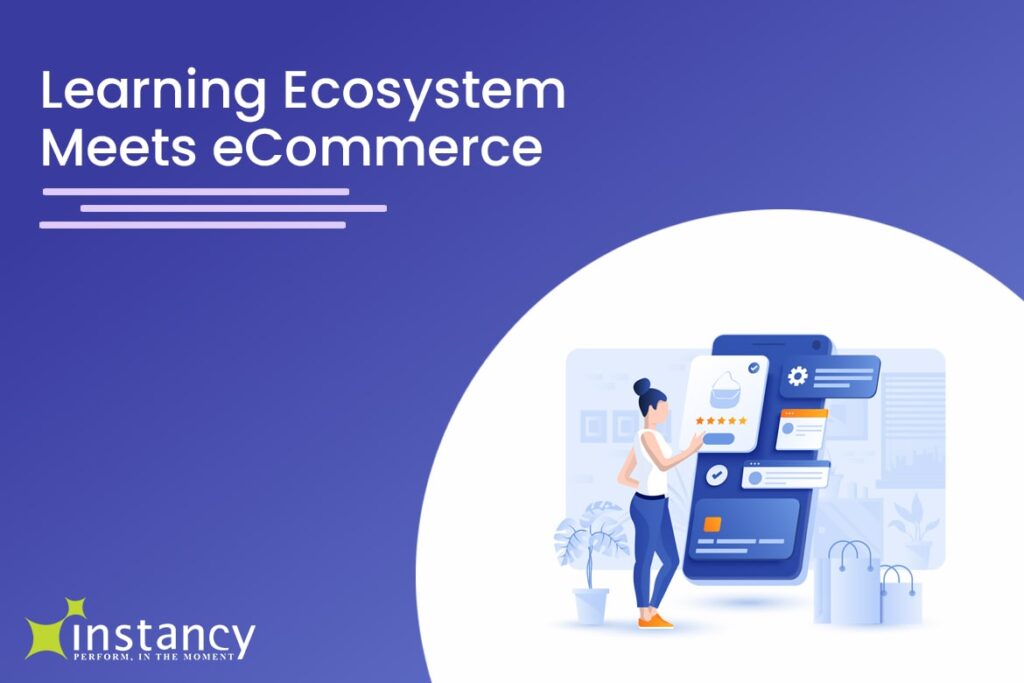You may already have a learning platform in place. One of your stakeholders discusses offering learning content and knowledge transfer to external customers. You wonder how you are going to integrate this ‘eCommerce component’ to your existing LMS or learning platform. Whether you realize it or not, this ONE request completely changes the landscape of your L&D infrastructure.
Instancy gets this request all the time. Customers call and ask, ‘how can we do this?’ If they currently use the Instancy Learning Platform, it simply means turning on the e-commerce app in their dashboard! We designed our original software solution from the ground up. It’s been a decade since we started building the Instancy platform. With each upgrade or iteration, we raised the bar to provide one of the most comprehensive ‘one solution’ learning environments in the industry
Seamless Experience to the Learners
We pride our product on seamless integration. Many traditional learning platforms can make it difficult to integrate everything your L&D team wants in their toolbox. For example, an important ‘must have’ is the ability to integrate data and reporting (enrollment, learning completions and payments data). All the data is in one place. On the administrative side, make one change and it appears everywhere. Change the catalog on your internal catalog. If that course is also available for purchase to outside learners, those changes appear across your entire platform.
In an eCommerce environment, our customers want the ability to have variable pricing. They want to offer discounts or coupons. They want to easily connect to the popular payment gateways. Instancy marks all those boxes also!
Front End and Back End
When we define a learning platform, we must differentiate the front end and the back end of the system.
The front end is the focal point of the learner.

It is the web entry or portal. It is also what a learner sees on their mobile device as a native app. The user looks at the menu choices. Or perhaps an intelligent device recognizes the learner’s skill path and recommends the next course or group of courses. The learner can perform a catalog search or browse broader categories. Increasingly courses are indexed by filters such as job role, price range, and payment gateways.

The Possibilities are Endless
Think of all the different tasks the user can access in the front end. Examples specific to eCommerce include:
- Home page or portal
- Catalog and intelligent browsing
- Course Previews and/or skill assessments
The eCommerce Experience
The eCommerce part of the learning portal is more than paying with a credit card. Sophisticated systems allow the user to treat purchasing a course the same as making an online purchase for clothes or other items online. You need a seamless interface where the learner searches and discovers learning opportunities, but also to add the course to a wish list, add to the shopping cart, and view or enter discount codes.
To have a robust learning platform, all possible learner interactions are key. How does all this integrate?
The Back End
The quality of the software coding along with the complex logic to execute it is no simple task. Instancy’s back end is seamless and powerful. The databases and analytics are complex, but Instancy makes it simple.
YOU DO NOT NEED TO WRITE A SINGLE LINE OF SOFTWARE CODE
The backend integration is simple and streamlined. Many organizations find this integration to be the most difficult task. Learning systems that have an eCommerce component must integrate with gateways like PayPal and Authorize Net. Globalization makes payment with Braintree popular because it accepts payments in multiple currencies. We also integrate with Trouchnet and are adding more all the time. Finally, Instancy works with in-app purchases such as Apple and Google.
As you plan your learning ecosystem, know that you can think out of the box and imagine the depth and breadth of what you can offer your stakeholders. Instancy is here to guide you and ensure you have a positive outcome.
Until next time…
Harvey




